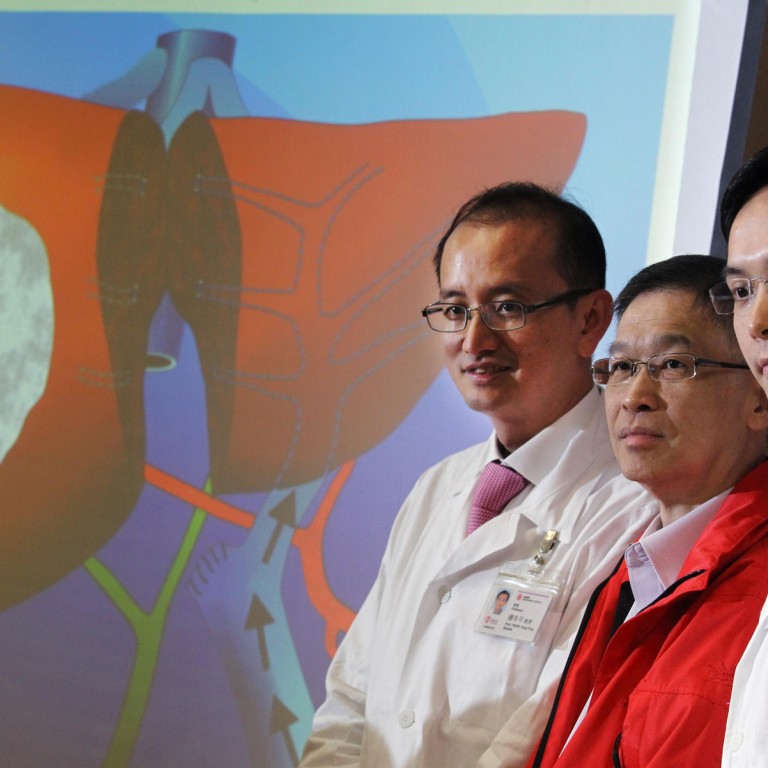
New technique boosts regrowth in liver cancer patients
The Queen Mary Hospital has introduced a new technique that has already helped save the lives of six liver cancer patients, including a child aged six.
The Queen Mary Hospital has introduced a new technique that has already helped save the lives of six liver cancer patients, including a child aged six.
Surgical tumour removal is one of the most effective treatments for liver cancer, thanks to the liver's ability to regenerate.
However, where the cancer is in the larger right lobe, cutting this part of the liver away creates a high risk of liver failure in patients with a small liver or poor liver function.
Now, using an ultrasonic dissector, the two lobes can be initially just separated, allowing the smaller left lobe to grow with the main blood vessel attached, while the right lobe is still able to function. After seven to 10 days, when the left liver is large enough, the right lobe is then removed.
Some patients who previously couldn't undergo the surgery can now have it done
"Some of the patients who previously could not undergo the surgery can now have it done because of this new technology," said Professor Ronnie Poon Tung-ping, head of hepatobiliary and pancreatic surgery at the University of Hong Kong.
Assistant Professor Albert Chan Chi-yan of HKU said all six patients aged six to 65 who had undergone the surgery since October had recovered well. The results would be published in science journal .
An earlier method to induce left liver growth in patients with small livers or impaired liver function uses a glue to block off blood flow to the right lobe and divert it to the left. It has been in use for about a decade but involves a regeneration period of about four to six weeks.
In about a third of cases, the blood flow is not adequately blocked off or the tumour deteriorates during the wait and the right lobe cannot be removed.
The left lobes of livers in the six patients who underwent the new surgery grew three times faster. Poon expects that the old technique will be phased out over the next 10 years as surgeons learn the skills required.
The Pok Fu Lam hospital treats about 300 liver cancer patients a year, around half of whom are suitable for surgery to remove part of the liver. Chan expects that 10 to 20 more patients will benefit from the new technique each year.
The new method - called associating liver partition and portal vein ligation for stage hepatectomy - is already in use in Europe However, about 30 per cent of patients overseas have suffered complications. Chan said the zero complications at Queen Mary's was thanks to the surgeons' experience of the skills required.
Liver cancer is the third most deadly cancer in Hong Kong, with 1,858 new cases in 2011.
